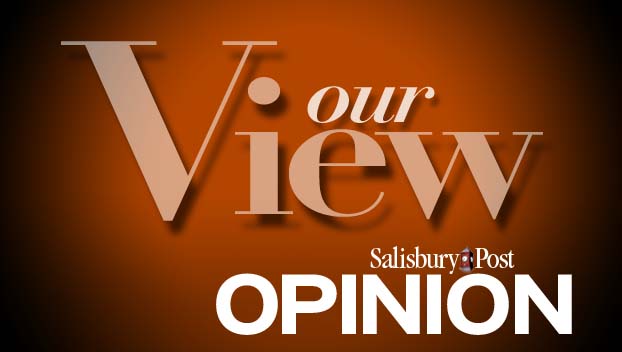Editorial: Precinct numbers give context for municipal election results
Published 12:00 am Sunday, November 7, 2021
When split into precincts, turnout numbers can provide key insights about how an election played out.
Excluding precincts where elections weren’t competitive, the range of municipal turnout starts at 6.95% and ends at 34.75%. Countywide turnout was about 18%, which is simultaneously abysmal, better than most communities in the state and in line with recent municipal turnout numbers. Of the 40,558 eligible voters, just 7,293 cast a ballot this year. For comparison, 73,662 of 97,443 eligible voters (75,59%) in cast a ballot in 2020. Turnout for the municipal election in 2019 was 20.33%.
In Salisbury’s mayoral race, Karen Alexander can thank three high-turnout precincts for giving her an 18-vote lead after election night.
Those precincts — West Innes, North Ward and Millford Hills City — turned out between 28% and 31% of voters. The precincts were three of the four highest-turnout areas in the county and comprise about 53% of Alexander’s vote total.
In geographic terms, Alexander’s key precincts cover the city’s northeastern neighborhoods. They are east of West Innes Street and north of Statesville Boulevard. The precincts cover neighborhoods around Hurley Park and Salisbury City Park, near Catawba College, the Country Club of Salisbury, Country Club Hills and, as its precinct name suggests, Millford Hills.
Without winning those, Alexander would have found it difficult to beat Al Heggins, who won a majority of precincts. An indicator of more geographically spread out support, Heggins’ best three precincts comprised a smaller percentage of her total — about 40% of her 2,481 votes.
Heggins also benefited from a big win in West Ward III, which contains the West End neighborhood, despite a low turnout of only 12.04% of registered voters.
It’s harder to glean election lessons in small town races from precinct-level numbers. Unlike the cities of Kannapolis or Salisbury, towns are single-precinct elections. Still, it’s interesting to look at how voters turned out for municipal elections.
The following are this year’s town turnout numbers:
• China Grove: 14.98%
• Cleveland: 12.15%
• Faith: 22.76%
The Faith precinct is unique because it also contains a portion of Salisbury’s city limits. So, voters in Salisbury’s and Faith’s elections cast ballots in the precinct.
• Granite Quarry: 18.62%
• East Spencer: 20.61%
• Landis: 4.7%
The town of Landis did not have a competitive election this year, which is the most significant contributor to the low percentage. Tony Corriher and Darrell Overcash were the only candidates who filed. Because no write-in candidates received more votes Corriher and Overcash will serve a four-year term on the board.
• Rockwell: 15.52%
• Spencer: 12.37%
As a general matter, Rowan County should turn out better for municipal elections than recent history shows. City and town elections select officeholders who will have significant and immediate impacts on daily life. That’s not usually the case with presidential, gubernatorial and congressional elections.
Rowan County also can be proud its 2021 turnout is higher than neighboring counties, which were not devoid of competitive races, as well as the state. Reasons behind that are multiple, including the degree of competitiveness. Just because an election has two candidates does not mean it drove turnout in the same manner as the Salisbury mayoral election.
Rowan County also can call itself home to a newspaper — the Salisbury Post — that works hard to provide informative coverage about elections. If people know elections are happening and feel informed about candidates on the ballot, they’re more likely to vote. Local newspapers are a place voters can rely on for detailed pre-election coverage about competitive races in their coverage area.
Improving civic engagement generally is one way to ensure registered voters are interested in participating in municipal elections. That means getting more people involved in groups like Civitans, Rotary Club, Kiwanis and Lions Club. Alternatively, people can join or form locals groups focused on art, sports, music and other interests. They’re not inherently political, but they help create bonds between people who wouldn’t otherwise know each other as well as connections to the place where people live. That will only help municipal election turnout.


